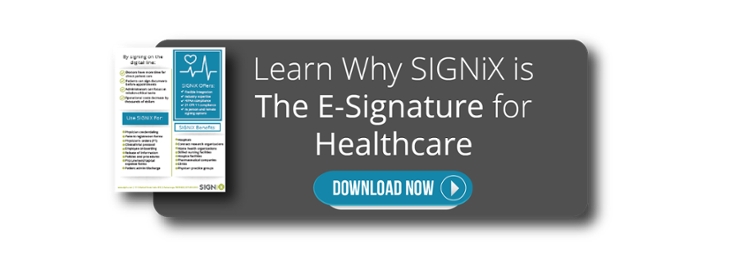Mobility is playing a significant role in many industries – but it is transforming healthcare. The industry continues to move from analog to digital, and from location-driven episodic care to on-demand care anywhere. Even though healthcare is deeply rooted in risk aversion and the status quo, breakthroughs are occurring at a rapid pace, and the industry is evolving. At Cloudbreak Health, we’re firm believers in this evolution.
We believe we can use technology to make healthcare more human. We believe that by connecting patients with their care team, we can improve outcomes, satisfaction and cost. We believe we can make a difference, and mobility plays a key role.
Mobility Is Everywhere
The demand for mobility surrounds us. Employees across the country are starting to do their jobs from wherever they happen to be. With e-signature technology and an Internet connection, any document, contract or form can be e-signed from just about anywhere using a mobile device. The same goes for patients, who want to see a doctor without traveling to a hospital or urgent care clinic. They want the care to come to them virtually or in person, wherever they may be.
to do their jobs from wherever they happen to be. With e-signature technology and an Internet connection, any document, contract or form can be e-signed from just about anywhere using a mobile device. The same goes for patients, who want to see a doctor without traveling to a hospital or urgent care clinic. They want the care to come to them virtually or in person, wherever they may be.
Quite frankly, this is what health insurance companies want as well. It’s called population health, and it is driven by the concept of keeping individuals well, instead of only treating them when they are sick. The advent of the smartphone, 4G LTE and increased broadband penetration has enabled mobile collaboration like never before, as well as helped make ubiquitous mobile healthcare advancements, like telemedicine, and digital health products, such as fitness tracking.
Creating Efficiencies in Healthcare
Healthcare professionals see a number of patients – most of whom probably never needed to make the appointment. One of the big problems in healthcare today is matching the cost of service to the acuity of the situation. For example, does a residency-trained, board-certified ER physician need to see a patient with an ear infection, or is that more appropriately treated in the primary care provider or pediatrician’s office? The more that we can match a patient with the appropriate provider, the more efficient the entire system will be. Solutions to these problems are plentiful but depend on changing patient behavior. Technology can now provide compelling user experiences to help drive this change.
Telemedicine can be used to help determine the condition of a person remotely through a video conference, and it is gaining momentum and wider acceptance due to its convenience and quality. While proper protocols need to exist for care escalation, this is a less expensive solution that reduces the number of visits, and it helps ensure that everyone has a resource to call upon when they need it. Telemedicine breaks down the four walls of the hospital and helps create a branded care network to serve the patient – virtually taking them from their home to the hospital and back again after discharge in a single care continuum. It’s a care team in their pocket.
Understanding How Telehealth Works
A doctor on a screen can perform many of the same exam checks that a doctor can perform in an examination room. However, consumer telemedicine was never meant to replace doctor visits entirely. It works well for non-urgent care needs, but patients with conditions that require higher levels of care can continue to be guided up the chain to the appropriate venue, and if required, even all the way to 911 interventions. Enterprise telemedicine is providing hospitals the ability to collaborate to bring the higher level of care they may need to a hospital that previously did not have on its medical staff. Tele-stroke and Tele-psychiatry are primary examples of this.
Getting Help
With the advent of these new technologies, the world seems to be continuously getting smarter. We live in a connected world where patients may speak a different language or be hearing impaired, and providers need to have tools that can make it easier to deliver the accurate news to them through more than just non-verbal communication.
Telehealth technology, such as Cloudbreak Health’s unified telehealth platform, can not only bring multiple specialists onto a single call, but it also integrates services for interpretation in more than 250 languages, so both patients and providers have peace of mind that their words are being heard and, most importantly, understood. Plus, like many types of mobile technology today, it's incredibly fast and cost effective.
Mobility Trends in Healthcare
According to a report by HIMSS, 93 percent of physicians use mobile technology every day, and 80 percent integrate its use to provide patient care. Doctors are also proving to be incredibly tech-savvy and are 250 percent more likely to own a tablet versus the average American. In addition, it's common to see hospitals supporting a Bring Your Own Device (BYOD) environment where practitioners can use their own mobile devices to check records or previous notes during patient visits. Perhaps one of the largest benefits of healthcare professionals integrating more bedside technology into their workflow is the increased access to EMRs (electronic medical reports), due to mobile applications. Practitioners are able to view the EMRs on their mobile devices instead of locating paper files. In time, these devices will proliferate and their use cases will continue to multiply.
If there was ever a question regarding whether or not mobility in healthcare is here to stay, the answer certainly points to a resounding yes. We’d love to hear your thoughts on mobility in healthcare and in your respective industries. Join in on the conversation using #HumanizeHealthcare.
 Jamey Edwards is the CEO of Cloudbreak Health, a healthcare solutions innovator that was formed by bringing together two companies: Language Access Network, the pioneer of Video Medical Interpreting, and Carenection, the world’s first true telehealth marketplace and the first unified telehealth platform. The platform is delivering over 1 million encounters per year to healthcare facilities nationwide over the Carenection Telehealth Delivery Network, a private path broadband network optimized for secure and high quality healthcare collaboration. To learn more about Cloudbreak Health, visit www.cloudbreak.us or follow Jamey on Twitter.
Jamey Edwards is the CEO of Cloudbreak Health, a healthcare solutions innovator that was formed by bringing together two companies: Language Access Network, the pioneer of Video Medical Interpreting, and Carenection, the world’s first true telehealth marketplace and the first unified telehealth platform. The platform is delivering over 1 million encounters per year to healthcare facilities nationwide over the Carenection Telehealth Delivery Network, a private path broadband network optimized for secure and high quality healthcare collaboration. To learn more about Cloudbreak Health, visit www.cloudbreak.us or follow Jamey on Twitter.
To learn why SIGNiX's Independent E-Signatures™ are The E-Signature for Healthcare, download this free fact sheet. 
%20formatted-1.png?width=2528&height=739&name=SIGNiX%20Logo%20Main%20(white)%20formatted-1.png)
